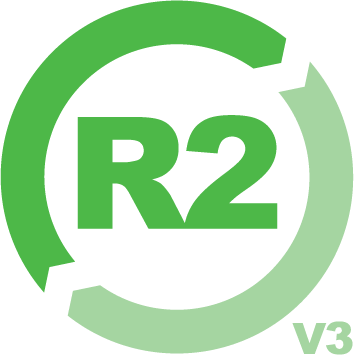Planning your data center maintenance strategy used to be easy. OK – maybe not easy, but much easier than it is now. Today, the pressures have intensified, the timelines and budgets have shrunk, while complexity and risks have increased. It wasn’t that long ago when most companies had data centers with equipment from only 2-3 manufacturers, and businesses could survive extended periods of downtime for data center moves, disasters or planned upgrades. Companies have hundreds of vendor products from numerous manufacturers and even more contracts associated with these assets. A multitude of leasing agreements, software, and hardware maintenance contracts may all have unique expiration dates. For nearly every business in today’s online world, the cost of downtime has skyrocketed. While this plethora of solutions was originally intended to provide a more flexible IT environment and decrease vendor lock-in, many companies are experiencing several unintended consequences. They now have an expensive asset that stifles innovation due to the enormous challenge of just keeping everything working.
Owning your own data center is expensive. At the AWS Summit in 2014, CEO Charles Phillips quipped, “friends don’t let friends build data centers’’. But, what do you do if you already have one? Or what do you do if you are leasing one or leasing a large suite at a collocation center? You may have even been challenged by your board that you need to “shut down a data center and move to the cloud”.
This is often the time when panic sets in. Many companies are continuously in the firefighting stage when it comes to IT. Problems, issues, upgrades, and contracts are dealt with as they come. This isn’t the fault of the IT manager – but the reality of increasing complexity of data center operations and management of diverse environments with mission-critical applications.
Sometimes the first and easiest place to look to bring some sanity and cost savings to the chaos is in data center hardware maintenance. The OEM’s offer annual contract renewals and often give you big discounts for signing up for the 3-year plan. But they really just want you to refresh all your hardware. The OEM’s offer expensive 1-year plans that crush your budget, or 3-5 year plans which crush your flexibility. Then you have to make this decision numerous times for all the other contracts for each manufacturer and for each refresh cycle. Multiple contracts, with multiple start and end dates makes managing these contracts difficult. To make matters worse, most companies struggle to find an accurate asset list and rely on the manufacturer to tell them what they are running in the data center. This ends up being a very one-sided negotiation with little opportunity for a flexible lower-cost solution. Your choices from the OEM are presented as
1. Upgrade to the latest OEM technology with a 3-year warranty.
Pros: Get the latest hardware, and the price is cheaper than maintaining and running the old equipment. Make your OEM salesperson happy, continue to get tickets to Falcons games.
Cons: Flexibility- Now you have an expensive asset on your books with 5 more years until it is fully depreciated. Upgrading to the new product may require some planned downtime and extensive effort.
2. Extend the life of your equipment and buy a 1-year OEM maintenance plan, or buy a longer plan for a better discount.
Pros: Avoid extending your problem for another 5 years, by extending the life of what you already own.
Cons: OEM’s make you pay for not upgrading or refreshing. Pricing is often prohibitive. With multiple OEM’s you have no ability to co-term your contracts.
With either choice, you are locked into a decision and now you may even start planning your cloud migration based on contract expiration dates, rather than on business objectives. There are other options. At ReluTech, we recommend a 5-step plan when looking at the data center maintenance strategy:
Step 1 is to do a complete hardware discovery of everything in your environment. This doesn’t mean to check the CMDB and print off an asset list. Most companies will find that the real asset list is much different than what is in the CMDB. The reasons for this are numerous: mergers and acquisitions where different systems have been used, shadow IT, unsupported applications, etc.
Step 2 should be to get a complete inventory of all maintenance contracts. What assets are you paying the OEM’s to maintain, and when does each contract expire?
Step 3 will be to compare your asset list to the assets on maintenance contracts. Some tool based discovery solutions automate much of this analysis. The results are often surprising with companies paying maintenance for assets that are no longer in use, and not paying for mission-critical assets where downtime could be costly.
Step 4 should be to move to a more flexible support solution where all manufacturer assets can be on a single contract with month to month pricing. This allows for cloud migrations to occur with immediate cost reductions for assets taken offline. Furthermore, the savings can be significant. By consolidating assets from multiple manufacturers and moving to a 3rd Party support platform, you will likely save 50% on support costs – and gain flexibility in the process!
Step 5 Develop and end of life plan to quickly dispose of excess assets. As soon as assets are migrated to cloud solutions, you should be able to not only reduce maintenance costs immediately but possibly get real value by selling your retired asset.
Good luck with your data center plan!

ABOUT THE AUTHOR | MARK METZ
Mark is the Founder and CEO of ReluTech. With many years of experience in the technology field, Mark is the leading force of ReluTech’s stride to change the future of the industry. Outside of the office, Mark enjoys swimming, playing ping pong, collecting comic books, and traveling with his family.
Get in touch with Mark: mmetz@relutech.com
